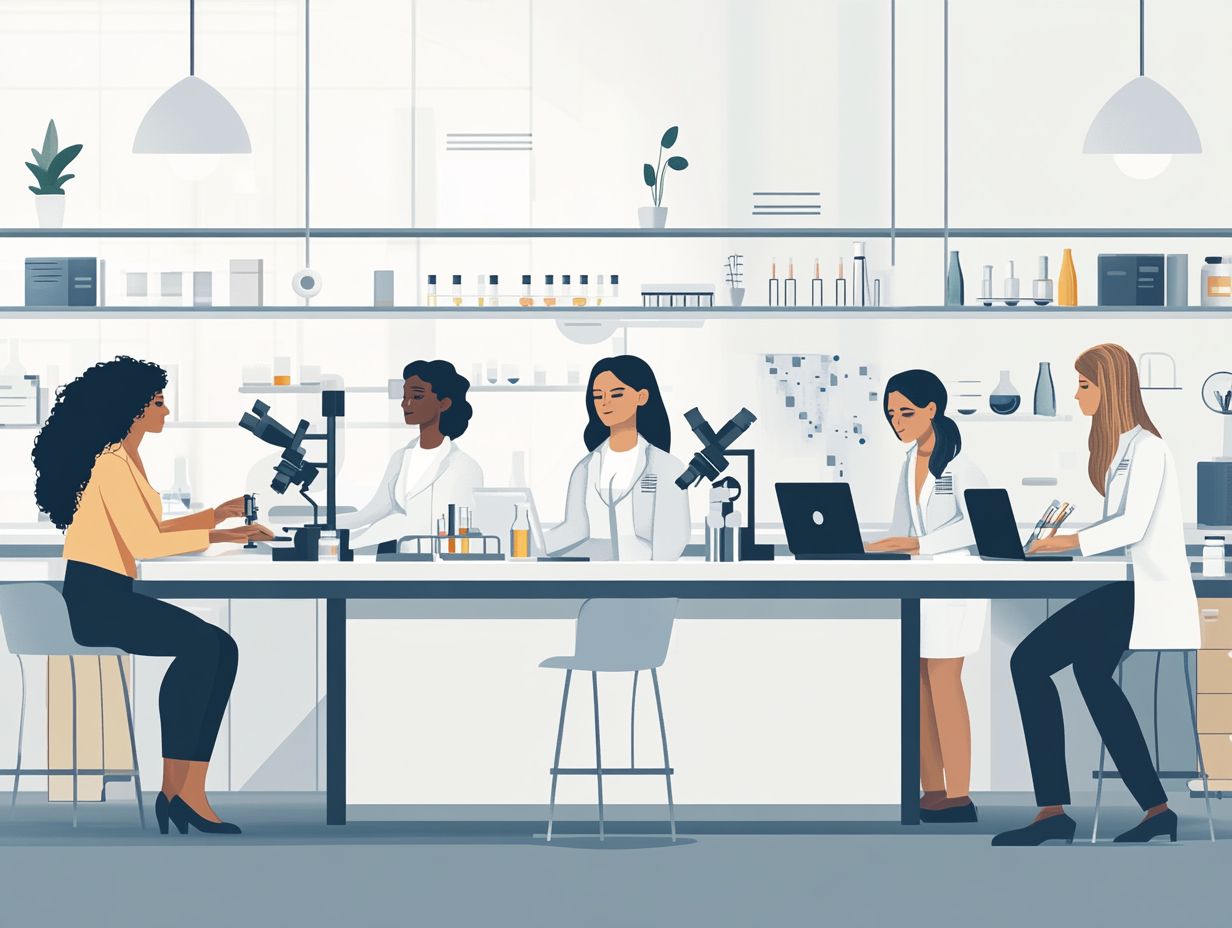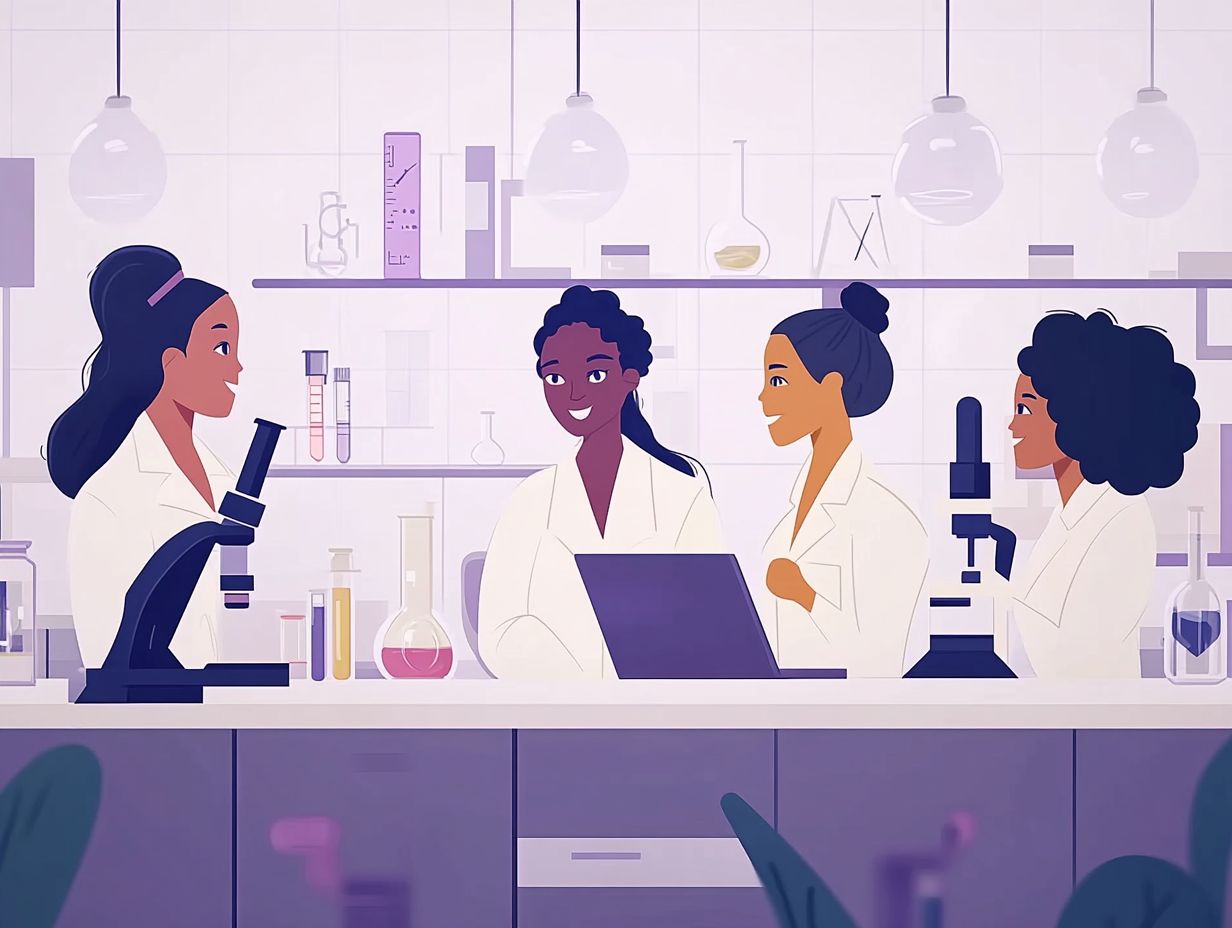In today’s rapidly evolving world, the significance of diverse perspectives in STEM (Science, Technology, Engineering, and Mathematics) is paramount. However, women continue to be significantly underrepresented in these fields, often facing challenges posed by stereotypes and systemic barriers.
This article explores the gender gap in STEM, highlights the transformative benefits of diversity, and examines the challenges that women encounter. Additionally, it discusses inspiring initiatives designed to encourage more women to pursue careers in STEM, thereby paving the way for a brighter and more innovative future.
By breaking down these barriers, we not only enable women but also enhance progress across all scientific disciplines.
Defining STEM and the Gender Gap

STEM stands for science, technology, engineering, and mathematics. It encompasses a wide range of disciplines that are essential for innovation and development within society. However, the gender gap remains a persistent issue in STEM fields, where women often face biases and stereotypes that hinder their representation in the workforce.
This challenge is fundamentally a matter of gender equality, as the underrepresentation of female scientists, engineers, and technology leaders means that valuable perspectives and ideas necessary for societal advancement are overlooked. Research indicates that women make up only about 28% of the workforce in engineering and technology jobs, with even fewer occupying leadership positions.
Biases manifest in various ways, from hiring practices to workplace culture, which may fail to acknowledge or appreciate women’s contributions. This not only restricts women’s career opportunities but also limits the potential for new ideas, as innovation thrives best in diverse environments.
To foster an atmosphere where creativity and collaboration can flourish, it is crucial to address these biases and promote gender equality. Bridging the gender gap in STEM will ensure that a broader array of perspectives and experiences is represented, ultimately enhancing the quality of solutions developed in these vital fields.
Breaking Stereotypes in STEM Fields
Breaking stereotypes in STEM fields is crucial for creating a welcoming environment where women can thrive as leaders and innovators. Gender norms shape perceptions of women’s capabilities in technology, science, engineering, and mathematics, leading to their underrepresentation and reinforcing harmful stereotypes.
These stereotypes restrict the entry and advancement of female engineers and scientists, hindering progress in these vital fields.
Challenging Gender Norms and Bias

Challenging gender norms and biases is essential for creating an equitable environment for women in science, technology, engineering, and mathematics (STEM) fields, where their contributions are acknowledged and valued.
Gender bias can manifest in hiring practices and workplace culture, negatively impacting the confidence and motivation of female scientists and engineers as they pursue careers in STEM. The types of gender biases present in STEM occupations can range from subtle microaggressions to overt discrimination and are often linked to the underrepresentation of women in leadership roles.
These barriers contribute to an unwelcoming workplace atmosphere that discourages women from pursuing STEM careers over the long term. Fortunately, advocacy groups and initiatives are driving positive change by enableing women through mentorship programs, leadership workshops, and networking opportunities.
Such organizations play a crucial role in fostering a community where women feel safe and supported as they strive for greater representation in a male-dominated environment, ultimately promoting diversity and equity across the STEM fields.
Benefits of Diversity in STEM
The benefits of diversity in STEM are substantial, encompassing greater innovation, enhanced creativity, and improved problem-solving within teams.
Diverse teams, which include women in STEM, draw on a wider range of perspectives and experiences, fostering better collaboration and leading to more innovative breakthroughs in technological and scientific research.
Furthermore, diversity promotes a culture of inclusiveness that supports the career growth of all individuals involved.
Advancing Innovation and Progress

Innovation and progress in STEM fields rely on diverse perspectives to foster creative thinking and develop solutions to complex challenges. Interdisciplinary studies, which promote collaboration among individuals from varied backgrounds, cultures, and experiences, are essential for organizations looking to harness the full potential of their workforces.
For instance, the International Renewable Energy Agency (IRENA) reported that the cost of electricity from renewable energy sources has decreased by 50% to 90% over the last decade. This significant achievement is partly attributed to the collaborative efforts of diverse teams that study different energy technologies, share their findings, and devise innovative strategies to meet their objectives.
In educational institutions, collaboration is crucial for creating an environment where students from diverse backgrounds can come together to exchange ideas and insights, enriching their overall learning experience.
Workforce development initiatives are vital to prepare the next generation of leaders in STEM fields for the challenges that society faces. Development programs that provide mentorship opportunities and emphasize diversity and inclusion will help build a talent pipeline capable of meeting future demands in an ever-evolving technological landscape.
Barriers to Women in STEM
Despite the growing recognition of the importance of women in STEM, significant barriers continue to hinder their access and success in these fields. Women encounter challenges such as gender representation, educational obstacles, and biases in hiring practices, all of which contribute to their underrepresentation as scientists and engineers.
These issues not only affect their career trajectories but also limit opportunities for professional development in STEM education.
Addressing Systemic Challenges

To create a more equitable environment for women in STEM, it is essential to address systemic challenges such as advocacy and community engagement. These efforts help drive policy changes and initiatives aimed at dismantling existing barriers.
Collaborative engagement between educational institutions, professional organizations, and community advocacy groups is necessary to promote gender equality and enable future leaders in technology, science, engineering, and mathematics.
Women in these fields often encounter bias, stigma, and a lack of representation, which can discourage them from pursuing or advancing in their careers. To mitigate this issue, organizations are increasingly implementing mentorship programs and scholarships specifically designed for women and underrepresented groups.
Additionally, fostering inclusive workplace cultures through training and awareness campaigns can help break down stereotypes and encourage allyship among all employees. Advocacy is crucial in raising awareness about these systemic issues, driving conversations around necessary reforms in hiring practices, retention strategies, and equitable pay.
This approach fosters sustainable improvements in the industry’s landscape.
Initiatives for Encouraging Women in STEM
Support initiatives for women in STEM are essential for providing the resources and infrastructure needed to foster their growth and success in these fields.
Programs focused on mentorship, scholarships, and internships create a strong support network that enables female scientists and engineers to pursue their academic and career aspirations.
Support and Mentorship Programs
Support and mentorship programs are crucial for building confidence and developing skills among women in STEM. They provide guidance on career paths and advice on navigating challenges.
These programs connect female engineers and scientists with experienced role models who offer guidance, emotional support, and networking opportunities within the scientific community. Structured mentoring enables participants to enhance their skills, expand their networks, and gain valuable industry insights.
Initiatives such as the Society of Women Engineers’ Mentorship Program and Girls Who Code not only facilitate mentorship pairings but also cultivate a supportive community that promotes collective success. Testimonials from women who have participated in these programs frequently highlight a significant increase in their self-worth and a clearer understanding of their career trajectories.
For instance, one participant from a recent program shared that her mentor’s advice transformed her approach to challenging projects, ultimately leading to her promotion shortly afterward. These programs demonstrate how enablement can significantly alter the narratives of women in STEM.
Future Outlook for Women in STEM
The future outlook for women in STEM is promising, as awareness of the importance of gender diversity and the valuable contributions of women to the workforce continues to increase.
With educational institutions and organizations increasingly investing in initiatives that promote the growth and enablement of women in technology, science, engineering, and mathematics, new opportunities for career advancement and leadership are being created.
Progress and Opportunities for Growth
Recent progress in including women in STEM fields has created significant opportunities for growth within educational institutions and the workforce.
Initiatives aimed at promoting the achievements of female scientists and engineers have raised awareness and created pathways for future generations, inspiring young girls to pursue careers in technology, science, engineering, and mathematics.
This transformation is reflected in the increasing number of scholarship programs designed specifically for female students and educational campaigns that highlight successful role models in these fields.
Schools and universities are also establishing outreach programs that engage young girls in STEM through workshops and hands-on activities. Furthermore, mentorship opportunities are emerging to connect aspiring female scientists with established professionals who can offer guidance and encouragement.
By fostering an environment that values diversity and inclusion, educational institutions can equip the next generation with the tools they need to navigate and succeed in STEM careers.
